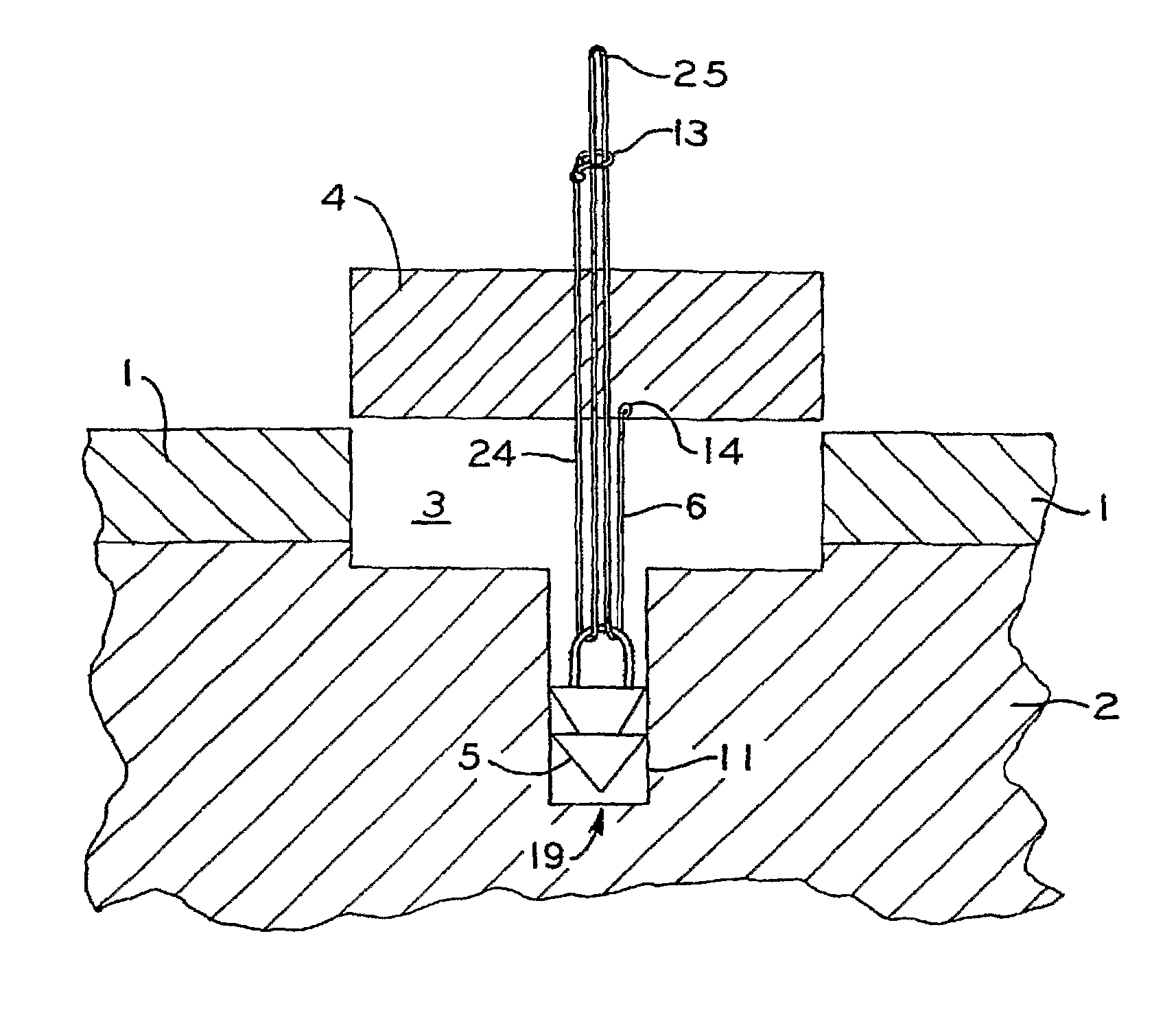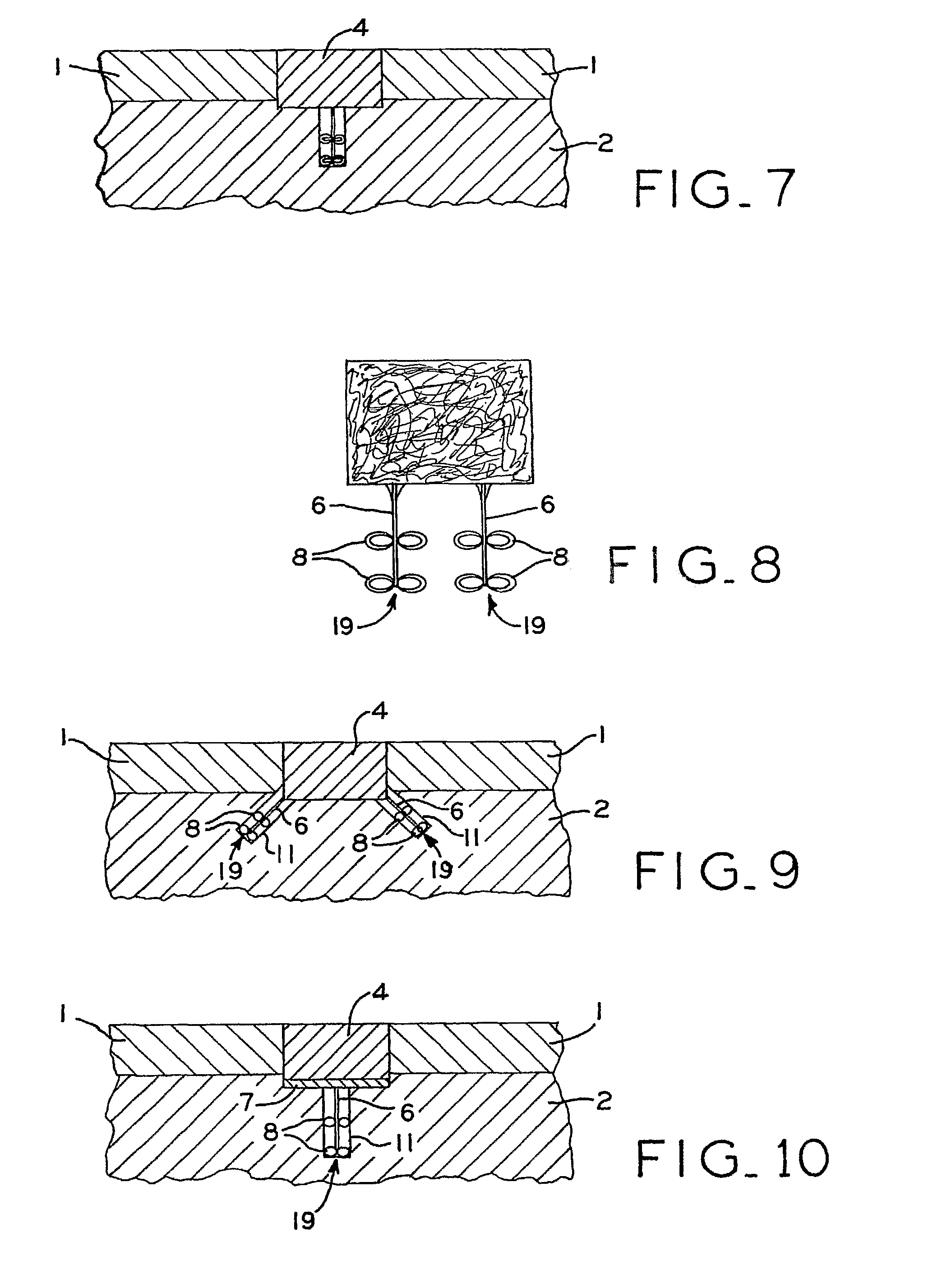Articular cartilage fixation device and method
a fixation device and cartilage technology, applied in the surgical field, can solve the problems of large defects that occur in articular cartilage that are easy to grow into small defects, and the progression of small defects to large defects is often unknowable, so as to facilitate the fixation of the device or implant, and maximize the pull-through force
- Summary
- Abstract
- Description
- Claims
- Application Information
AI Technical Summary
Benefits of technology
Problems solved by technology
Method used
Image
Examples
Embodiment Construction
[0082]A variety of articular cartilage fixation devices 19 utilizing the principles of the present invention are illustrated in the accompanying drawings. The illustrated surgical devices 19 are intended for implantation in a patient for repairing a tissue of the body in the patient. The illustrated embodiments would most commonly be used in repairing articular cartilage, such as that in the knee, hip, shoulder, or ankle; however, the invention is not so limited. Articular cartilage and subchondral bone are illustrated at 1 and 2, respectively, in the accompanying drawings (FIGS. 1-3,5-7, 9-11, 13-15, 17-19, 21-23, 25-27, 29-31, 33-36, 40-42). An example of a cartilage and bone defect is shown in FIGS. 1-3,5-7, 9-11, 13-15, 17-19, 21-23, 25-27, 29-31, and 33-36, 40-42. The invention is also expected to be useful in the treatment of cartilage only defects (i.e. defects without the involvement of bone) and in the treatment of damaged or diseased cartilage in other body parts as well.
[...
PUM
| Property | Measurement | Unit |
|---|---|---|
| biocompatible | aaaaa | aaaaa |
| biocompatible flexible | aaaaa | aaaaa |
| flexible | aaaaa | aaaaa |
Abstract
Description
Claims
Application Information
 Login to View More
Login to View More - R&D
- Intellectual Property
- Life Sciences
- Materials
- Tech Scout
- Unparalleled Data Quality
- Higher Quality Content
- 60% Fewer Hallucinations
Browse by: Latest US Patents, China's latest patents, Technical Efficacy Thesaurus, Application Domain, Technology Topic, Popular Technical Reports.
© 2025 PatSnap. All rights reserved.Legal|Privacy policy|Modern Slavery Act Transparency Statement|Sitemap|About US| Contact US: help@patsnap.com



